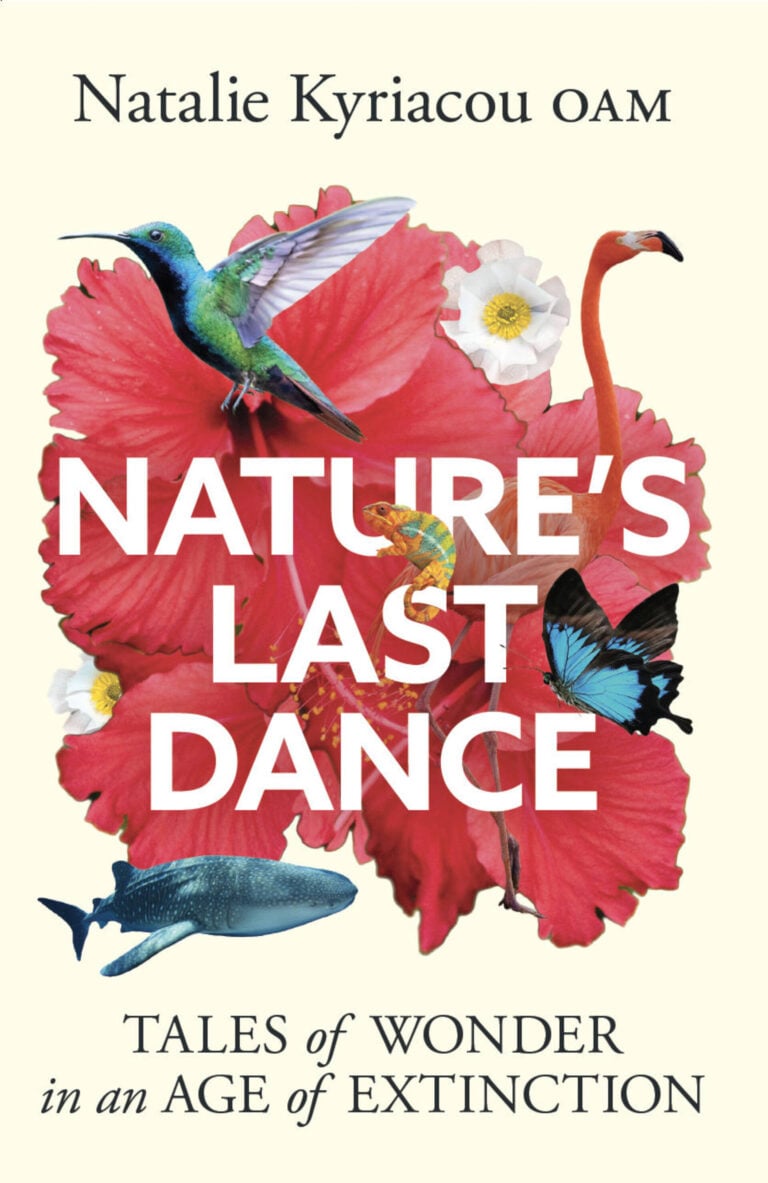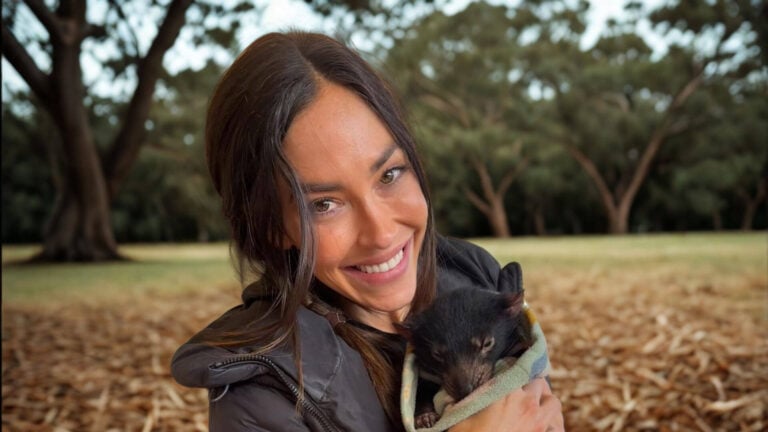Award-winning environmentalist Natalie Kyriacou has written her first nonfiction book, writing about nature in a way that hasn’t been done before.
Nature’s Last Dance: Tales of Wonder in an Age of Extinction weaves together science, politics, culture, comedy, joy and grief, on a trip into the extinction crisis.
The world is currently experiencing its sixth mass extinction event and for the first time in history, it’s not natural, it’s driven by humans.
She hopes that the stories told in the book can provide fuel for humanity to confront and reverse the crisis.
True stories of a drug lord’s hippos, birds that romance rocks, and whale poo getting the attention of Wall Street, just to name a few.
Neos Kosmos spoke to Kyriacou ahead of the release of her book on 26 August.
What inspired you to write Nature’s Last Dance?
Simply, because I care. Nature is our joy, our wonder and our lifeline. It is the source of our stories and symbols, our art and ingenuity. It fuels our health, feeds our bodies and builds our homes. It inspires technology, births medicine, and builds empires.
Every thread of civilisation, every medical innovation, every breath we take owes its roots to the natural world. Nature isn’t just our landscape – it is our life support system.

And, I see people disengaging from environmental issues. I see division. I see many viewing our environmental challenges as too big, too broken to fix. I wanted to blend humour, joy, tragedy, and inspiration to tell the story of humanity and nature in a way that can (hopefully) cross political and social divides and appeal to a diversity of people.
My hope is that more people will recognise that our greatest priority in life should be sustaining the very thing that allows us to exist: nature.
How did you choose which stories to include?
There were so many stories I couldn’t fit in the book – choosing which ones to include was agonising. It was part instinct, and part a deliberate desire to shine a light on communities and species that are often overlooked or excluded from mainstream narratives, but who play an instrumental role in driving environmental efforts forward.

The 12-year-old girl that made a promise to protect an endangered owl, who spends her afternoons teaching grown-ups about the forest. The wildlife rescuer who spent Christmas Eve dangling upside down in a drain to save a bird. The vulture, whose decline in India led to the deaths of half a million people and cost the economy $350 billion. The Pacific Island nations whose leaders have become towering voices for environmental justice.
These are stories of true giants living among us, yet we don’t hear their names, voices or stories nearly enough.
How did you strike that balance between humour and heartbreak?
To me, nature (and the human experience within it) is never just one thing. It’s joy and tragedy, humour and absurdity, awe and wonder, often tangled together.
That’s the texture of life, and I wanted the book to feel like that. I tried to cover this entire spectrum: humour invites us in and sparks our curiosity, heartbreak shows the full weight of what we stand to lose.
Why was it important for you to include humour for a more serious overall topic?
First, I wanted this book to reach people who might never pick up a nature book — those who feel disconnected from environmental issues, and even those who might actively disagree with me. I wanted this book to cut across social and political divisions, and I think humour can often cut across these divisions, shining a light on the sheer absurdity of humanity’s relationship with nature. To me, laughter is something that can bring people together and make meaningful conversation possible.
Secondly, I think, quite frankly, I needed humour for my own sanity. Writing about environmental challenges can be heavy, sometimes even paralysing. Humour kept the work buoyant; it gave me a way to hold onto levity while covering weighty topics.
What’s the strangest thing you uncovered when writing about these bizarre stories?
Honestly, it is hard to choose just one. The whole book is full of unbelievably strange stories! There is a toilet heist, a drug lord’s hippo invasion, a Roman emperor’s war with the god of the sea, and stories of scientists uncovering gaps in the theory of evolution through the genitalia of wild animals, to name a few.

Who did you write this book for?
I wrote this book for a mainstream audience, especially for those who might not usually engage with environmental topics. I know that for many, environmental issues feel distant, niche, or outside their expertise. Others can feel overwhelmed by the relentless stream of negative news about the state of the planet.
My aim was to make the case for nature to everyone, not just those already invested in environmental issues. I wanted to show that our lives, our economies, our identities, and our societies are all deeply entwined with the natural world.
I also wanted to challenge the myth that nature is simply a backdrop, something ornamental that we can admire at our leisure. Understanding and protecting nature is not a niche concern. It is fundamental to everything we care about. By exploring these connections, I hoped readers could see that nature is woven into every facet of our existence, sometimes in really extraordinary and humorous ways!
As I say in my book: “Nature is not the backdrop to our lives; it is our lives. Wars have been fought over it, empires built upon it. Leaders have risen and fallen by its hand. It has shaped economies, forged legal systems and fed nations. Yet it rarely gets the credit it deserves. Nature is the force that shapes our lives and powers the world.”
What do you hope readers take from it?
I hope readers feel a sense of wonder and love for the natural world and the communities protecting nature. I hope they feel determined to participate more fully in its protection.
As someone who’s worked across NGOs, corporations, and governments, where do you see the greatest potential for real environmental change?
I provide a list of actions in my book which I believe can shift the dial. But I truly believe that the answer lies in community. The power of the individual is immense in its ability to mobilise, connect and amplify change within a community.
I think we need deliberate and collective efforts to rethink and reshape the dominant institutions, economic structures, political systems and social and cultural narratives that are harming nature and communities. And the individual can be powerful in driving this, particularly when their action is woven into collective momentum; when people pool their diversity of strengths as part of a community, systems begin to shift.
Natalie Kyriacou’s book, Nature’s Last Dance: Tales of Wonder in an Age of Extinction, is available in all major booksellers, as well as independent bookstores, Audible and Kindle. You can also purchase it directly via her website.